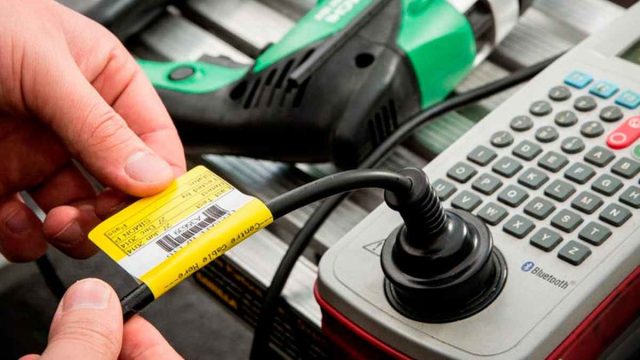From simple appliances to complex machinery, electrical equipment plays a vital role in our daily lives. However, it’s important to remember that this equipment can also be hazardous and cause serious accidents and injuries if improperly maintained and inspected. This is where testing and tagging come into play.
Testing and tagging refer to inspecting electrical equipment to ensure it is safe for use. The process involves a range of tests to assess the electrical safety of the equipment and the application of a tag to indicate its status. In this guide, we’ll discuss the importance of testing and tagging electrical equipment and the potential risks associated with not properly maintaining and inspecting equipment.
Identify and eliminate accident risks.
Contents
Firstly, it’s important to understand that electrical equipment can pose significant risks if improperly maintained and inspected. Faulty equipment can lead to electric shocks, electrocutions, fires, and explosions. These hazards can cause severe injuries or even death, and the associated costs can be enormous. In addition to the human cost, accidents caused by faulty electrical equipment can result in significant financial and reputational damage to individuals and businesses.
The test and tag process is essential for identifying and preventing these risks. Through regular testing and inspection, potential hazards can be identified and addressed before they become a danger. This not only helps to ensure the safety of individuals using the equipment but also protects businesses from the legal and financial consequences of accidents caused by faulty equipment.
Ensure there are no defects.
The process of testing and tagging involves a range of tests to assess the safety of electrical equipment. These tests typically include earth continuity, insulation resistance, and polarity testing. These tests evaluate the integrity of the equipment’s insulation and grounding, ensuring no defects or faults could cause electrical hazards.
In addition to the tests, the tagging process is an essential aspect of testing and tagging. After the equipment has been tested, it is marked with a tag indicating its status. This tag provides vital information about the equipment, including the date of the last test, the name of the person who tested it, and the next test date. This information helps ensure that equipment is regularly tested and inspected and that defects or issues are identified and addressed promptly.
It is a legal requirement.
Another critical aspect of testing and tagging is the legal requirements associated with electrical safety. Businesses and individuals have legal obligations to ensure that electrical equipment is safe. These obligations are set out in a range of regulations and standards, including the Occupational Health and Safety Act and AS/NZS 3760:2010, which outlines the requirements for the in-service safety inspection and testing of electrical equipment.
Failure to comply with these regulations can have significant legal and financial consequences. In addition to fines and legal penalties, businesses may face reputational damage and loss of customers if accidents occur due to faulty equipment.
Extend the equipment’s lifespan.
Furthermore, regular testing and tagging can also help extend electrical equipment’s life and reduce maintenance costs. By identifying and addressing potential issues early, the equipment can be repaired or replaced before it becomes a severe problem. This can help to reduce the need for costly repairs or replacements, saving businesses money in the long run.
Maintain a safe working environment.
Testing and tagging ensure that all electrical equipment is safe for use, reducing the risk of accidents and injuries in the workplace. This, in turn, helps to boost employee morale, increase productivity, and lower absenteeism due to damages caused by faulty equipment. Furthermore, a safe working environment can also help attract and retain employees, demonstrating a commitment to employee safety and well-being.
The bottom line
Testing and tagging are essential for ensuring electrical equipment’s safety. Faulty equipment can pose significant risks to individuals and businesses, leading to accidents, injuries, and financial costs. Through regular testing and inspection, potential hazards can be identified and addressed, ensuring that equipment is safe for use and that legal requirements are met. Testing and tagging can also help extend the equipment’s life and reduce maintenance costs, providing additional benefits to businesses. As such, individuals and companies must take the process of testing and tagging seriously and ensure that their electrical equipment is regularly tested and inspected.


